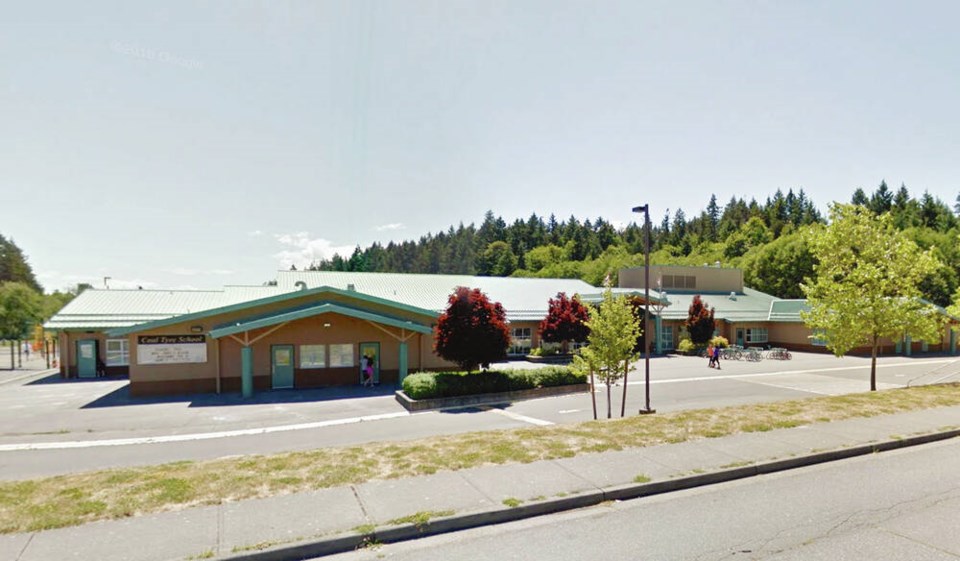A committee could soon be set up to rename Coal Tyee Elementary School, named for a First Nations man who helped the Hudson’s Bay Company find coal deposits in the area.
The Nanaimo-Ladysmith school board will consider the move after its education committee unanimously backed a motion to set up the committee.
Coal Tyee Elementary school, located in Nanaimo’s north end, was named for Ki-et-sa-kun, who was nicknamed Coal Tyee because he brought the coal deposits near Nanaimo to the attention of the Hudson’s Bay Company, paving the way for mining on the central Island. The school, which opened in 1996, has about 350 students.
Today, Coal Tyee is seen by many Snuneymuxw people as a tragic figure, since his interaction with the colonial peoples led directly to colonization of the area and destructive resource extraction that has affected the land, district superintendent Scott Saywell said in a report to the education committee.
According to a City of Nanaimo account, Ki-et-sa-kun was having his gun repaired in Victoria in 1851 when he spoke of coal in Nanaimo. A clerk for the Hudson’s Bay Company subsequently travelled to Nanaimo to confirm the presence of coal.
The company closed its mine at Fort Rupert and moved its operations to Nanaimo.
“We believe that at the time of the school opening, in good faith it was felt that he represented a positive story of collaboration between the colonial and Indigenous peoples as well as representing Nanaimo’s heritage with respect to coal mining,” Saywell’s report said.
“But that interaction has also impacted the Snuneymuxw peoples in an extremely negative and ongoing way and led directly to the generational trauma that we are working with our Snuneymuxw relatives to heal.”
While colonization was not the fault of Coal Tyee or any other Indigenous person, his role is not one to be celebrated and is not consistent with the district’s policies, wrote Saywell, who questioned whether the school, under its current name, could be seen as welcoming to Snuneymuxw students.
Preliminary discussions with the Snuneymuxw First Nation indicate there is support for a name change, Saywell said, noting the conversation about the name was started by the school’s principal, Diane Charles, and staff.
Joan Brown, chief administrative officer of the Snuneymuxw First Nation and knowledge keeper for Nanaimo public schools, said place names are important — “to learn the place names is to connect and to connect is to heal.
“So for us, it is really going back to the beginning from an ancestral perspective to think about how we can move forward and building the coping skills and resiliency like the ancestors.”
Trustee Charlene McKay, who was behind the motion to set up a committee to look at the name change, said Brown was instrumental in guiding the policy about how to go about naming or renaming schools.
“I think it is going to be a really good thoughtful process that we undertake together and it is one more opportunity for us to do things in a good way, side-by-side as we do.”
Meanwhile, Naomi Bailey, acting manager of Indigenous protocol at Vancouver Island University, was elected as the newest trustee on the Nanaimo-Ladysmith school board in a byelection Saturday.
Bailey pulled in 859 votes to Steve Rae’s 236. They were the only candidates.
The seat became vacant after former trustee Lisa Marie Barron was elected last year as MP for the Nanaimo-Ladysmith riding for the NDP, beating incumbent Paul Manly of the Greens.
cjwilson@timescolonist.com



